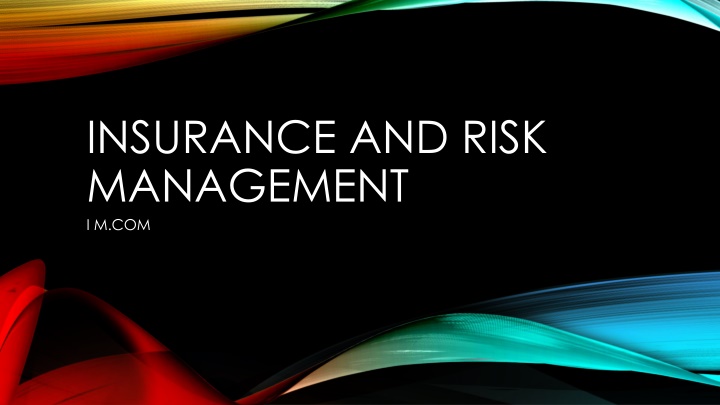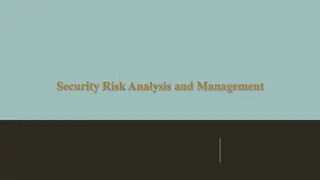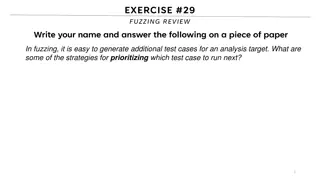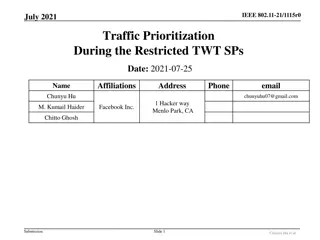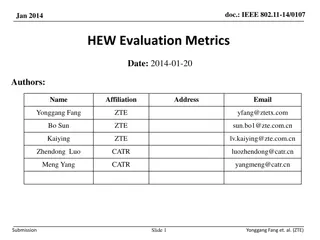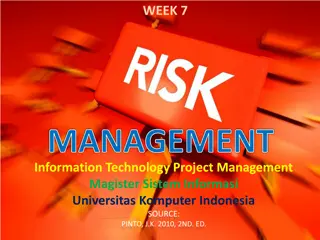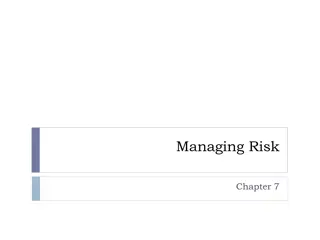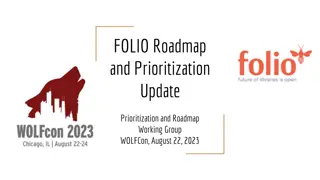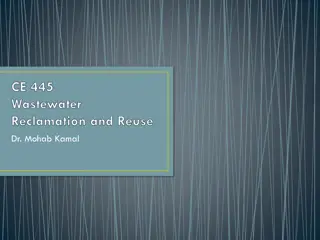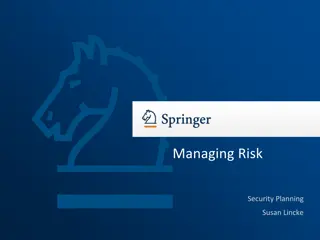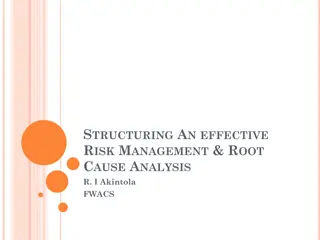Risk Management in Project: Identification, Evaluation, Prioritization
Risk management is vital in projects to identify, evaluate, prioritize risks, minimizing negative impacts & maximizing opportunities. Techniques like brainstorming, Delphi, interviewing, root cause analysis, SWOT analysis, and risk register play key roles in managing risks effectively.
Download Presentation

Please find below an Image/Link to download the presentation.
The content on the website is provided AS IS for your information and personal use only. It may not be sold, licensed, or shared on other websites without obtaining consent from the author.If you encounter any issues during the download, it is possible that the publisher has removed the file from their server.
You are allowed to download the files provided on this website for personal or commercial use, subject to the condition that they are used lawfully. All files are the property of their respective owners.
The content on the website is provided AS IS for your information and personal use only. It may not be sold, licensed, or shared on other websites without obtaining consent from the author.
E N D
Presentation Transcript
INSURANCE AND RISK MANAGEMENT I M.COM
CONCEPT OF RISK MANAGEMENT Risk management is the identification, evaluation, and prioritization of risks (defined in as the effect of uncertainty on objectives) followed by coordinated and economical application of resources to minimize, monitor, and control the probability or impact of unfortunate events[1]or to maximize the realization of opportunities. Risks can come from various sources including uncertainty in financial markets, threats from project failures (at any phase in design, development, production, or sustainment life-cycles), legal liabilities, credit risk, accidents, natural causes and disasters, deliberate attack from an adversary, or events of uncertain or unpredictable root-cause. There are two types of events i.e. negative events can be classified as risks while positive events are classified as opportunities. Several risk management standards have been developed including the Project Management Institute, the National Institute of Standards and Technology, actuarial societies, and ISO standards.[2][]Methods, definitions and goals vary widely according to whether the risk management method is in the context of project management, security, engineering, industrial processes, financial portfolios, actuarial assessments, or public health and safety.
TOOLS AND TECHNIQUES OF RISK MANAGEMENT Documentation Reviews The standard practice to identify risks is reviewing project related documents such as lessons learned, articles, organizational process assets, etc Information Gathering Techniques The given techniques are similar to the techniques used to collect requirements. Lets look at a few of them: Brainstorming Brainstorming is done with a group of people who focus on identification of risk for the project. Delphi Technique A team of experts is consulted anonymously. A list of required information is sent to experts, responses are compiled, and results are sent back to them for further review until a consensus is reached. Interviewing An interview is conducted with project participants, stakeholders, experts, etc to identify risks.
Root Cause Analysis Root causes are determined for the identified risks. These root causes are further used to identify additional risks. Swot Analysis (STRENGTH, Weakness, Opportunities And Threats) Strengths and weaknesses are identified for the project and thus, risks are determined. Checklist Analysis The checklist of risk categories is used to come up with additional risks for the project. Assumption Analysis Identification of different assumptions of the project and determining their validity, further helps in identifying risks for the project. Outputs to Identify Risks This process of Risk Identification results in creation of Risk Register.
Risk Register A Risk Register is a living document that is updated regularly throughout the life cycle of the project. It becomes a part of project documents and is included in the historical records that are used for future projects. The risk register includes: List of Risks List of Potential Responses Root Causes of Risks Updated Risk Categories Tools and Techniques: Some of the tools that can be used for qualitative risk analysis include: Probability And Impact Matrix The matrix helps in identifying those risks which require an immediate response. The matrix may be customized according to the needs of the project. Most companies do have a standardized template for this matrix and project managers could leverage those templates as well. Use of standardized matrix makes the matrix list more repeatable between projects.
Risk Data Quality Assessment Data is collated for the identified risks. The project manager will try to find the precision of the data that must be analyzed for completing the qualitative analysis of risks. For each risk, in Risk Data Quality Assessment, the project manager needs to determine: Extent of the understanding of the risk Data available Quality and reliability of the data Integrity of the data
